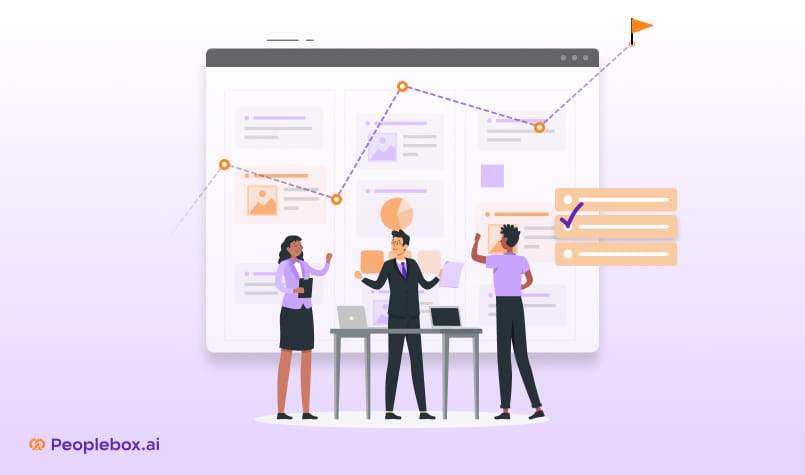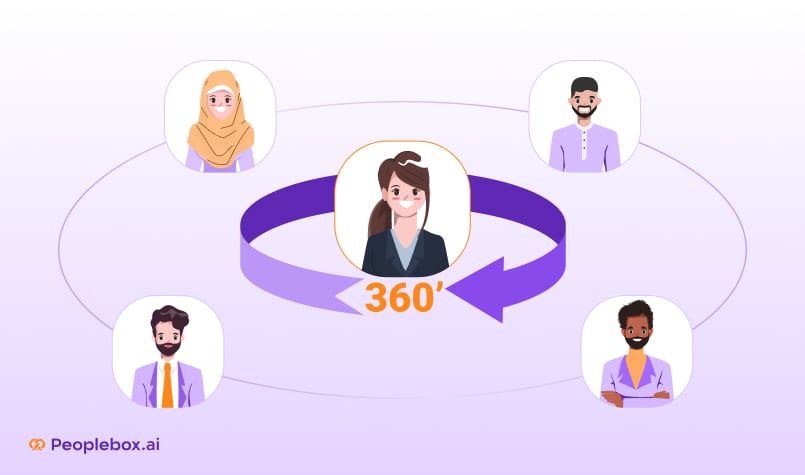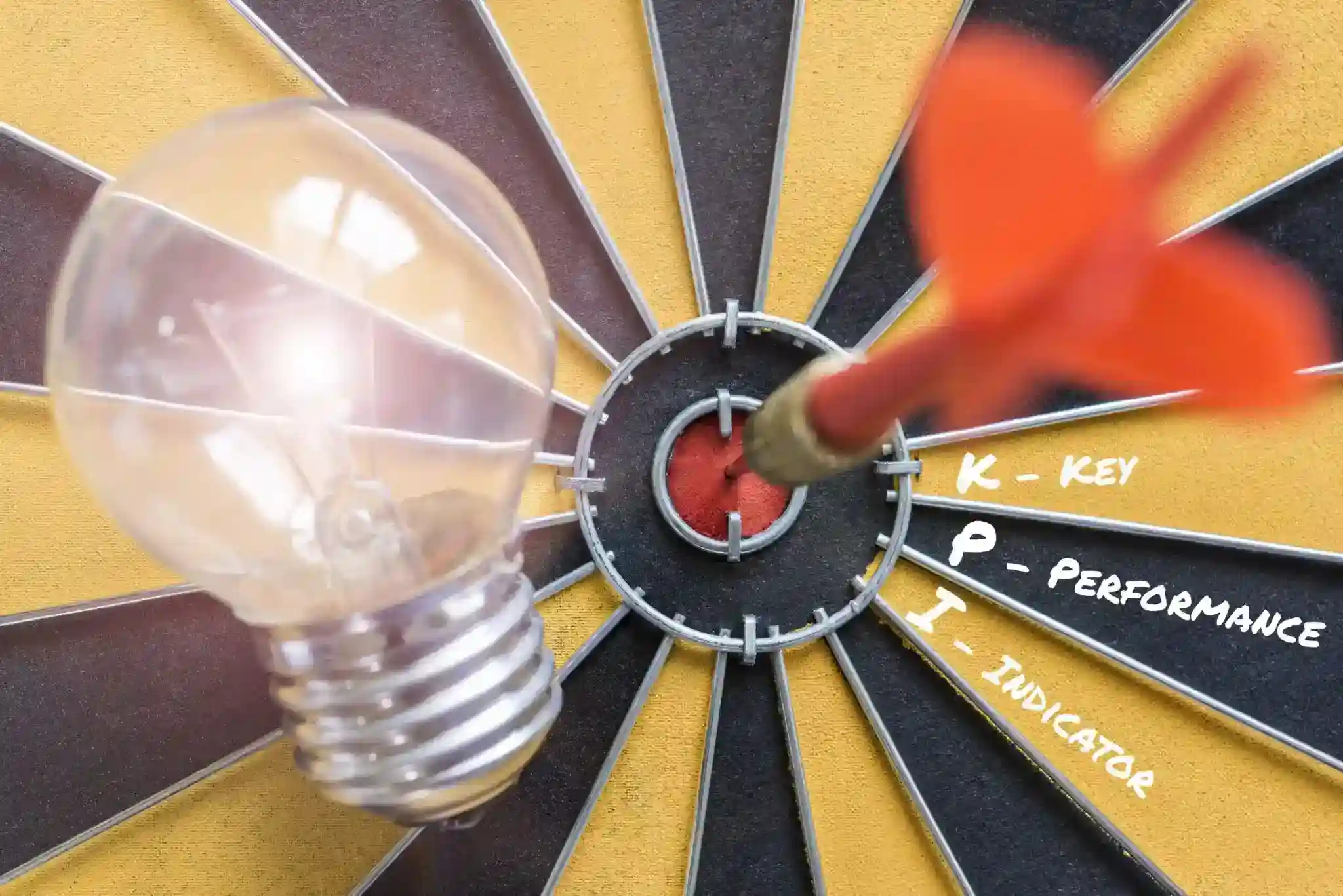Without being crystal clear on the exact responsibilities, qualifications, and skills required for all roles in your organization without an iota of doubt, it can be super hard to find the right candidate—or even defining the position—becomes a challenge. This is where job analysis comes in.
Job analysis helps organizations define what a job requires, ensuring that everyone—from hiring managers to employees—understands the expectations. Whether it’s for recruitment, employee development, or compensation, job analysis lays the groundwork for many HR functions. In this blog, we’ll explore the key objectives of job analysis and how it helps create a more effective and organized workforce.
Objectives of Job Analysis
Without the right job analysis, it’s difficult to prepare a useful job description. When a key employee suddenly leaves, you need the information necessary for recruiting a replacement, where a job description comes in handy. The employees also need to know the skills that are needed to perform the jobs. It also helps assess the functional level of responsibility and accountability.
The entire employee lifecycle hinges on job analysis and should be regarded as the most important document to map out responsibilities clearly, and in-depth understanding of competencies.
The following are the frequently considered objectives of job analysis:
- Job postings (to specify knowledge, skills, and abilities of successful candidates) and improve the candidate pool
- Helps develop a robust and super comprehensive template for screening candidates, while being inclusive
- Tailor interview questions and assess candidate potential without leaving any aspect of the job, or attribute to chance
- Helps develop an interview plan based on the job analysis
- The job orientation provides psychological support as well as administrative support and enhances the likelihood of success so that the candidates are onboarded well and trained according to the position they’re occupying currently and the one they’ll reach for as soon as they mature
- Helps keep track of change management
Elements of a Job Analysis
| Elements | Significance |
| Description of work activity | Description of major job functions, action performed, outcomes of that action, tools used for the job, amount of discretion allowed, and frequency at which the action is performed |
| Knowledge, skills, and abilities necessary to perform the job | Qualifications a candidate needs to succeed in a role and be proficient in performing tasks |
| Range of job performance required | What constitutes a high level of job performance to identify competencies that separate stars from the rest of the employees |
| Characteristics of workplace required | Interactions the job holder will have, the physical environment they’ll work in, emotional, and social requirements |
Job Analysis Process
Job analysis requires openness which in turn seeks enough information for people to evaluate what appears to be the advantages and disadvantages of the job being analyzed. It also includes job content, job context, and the total work environment to which workers need to adjust.
There are six deliverables of job analysis, the main of which are job descriptions:
- Description of the opening, and the workplace in which the job needs to be performed
- The organization’s mission, vision, and goals that flow from its purpose
- Functional performance levels and job performance range that a job holder needs to accomplish organizational goals
- Working conditions – physical, environmental, social, and responsibilities and type of supervision required for the job
- Growth opportunities required for the job
- Benefits and perks the job holder gets for meeting goals right on time and accurately
1. Determine the Purpose and Scope of the Analysis
It’s impossible to conduct a job analysis successfully without considering the wider context of the organization, industry, type of leadership, immediate goals, and workforce composition. Human resource aspects need to be considered hand-in-hand when introducing new work roles. Developing job descriptions through job analysis underpins decisions concerning selection, promotion, performance appraisal, and training and so needs to be done diligently.
Determine what’s driving the need for job analysis right now.
- Are you setting up a new entity in the organization that needs to be designed from scratch?
- Are you facing reporting, and responsibility matrix issues and want to restructure the organization once and for all?
- Are you looking to streamline the recruitment process?
- Do you want to revamp the performance review criteria, tie them closely to the actual job, and make them more relevant?
- Do you have frequent role conflicts that you’re looking to solve by revamping or creating job analysis and having documented job description documents?
Regardless of what drove your decision to take up job analysis, assess the scope and extent to which you’re ready to take it. Do you want to do department by department after doing a focus group, or do you want to take up organization-wide job analysis?
Identify which departments will be involved. Also, determine the possible circumstances in which there is a strong chance for success and a potential for a large impact, so you can sidestep pitfalls. Figure out the possibility of linking with other organizational developments, and single out the key change-driving roles.
2. Gather Relevant Job-related Information
Once you figure out the job analysis type and means, it’s time to gather all possible information you have at hand, so you can start investigating, find loopholes, and then conduct analysis to make the process whole.
Dig into existing documents:
- Existing job design documents
- Overall organizational workflow documents, and process mapping documents
- Documented organizational structure and systems
- Cultural aspects to be considered
- Any previous attempts at job analysis, and interview excerpts from subject matter experts
- Previously created job descriptions, and skill matrices
- Training documents
- Previously used job posts
- Customer complaint records
- Internal memos and emails about unusual events that took place
- Problems in recruiting applicants for certain roles
- Any accidents or incidents that happened
Explore a range of documents, and don’t limit yourself to any particular medium of information.
3. Select Job Analysis Methods and Tools
Develop a shared understanding of what an appropriate job analysis looks like. Choosing the right job analysis methods and tools is crucial to gathering accurate, relevant data about the role in question. There are various approaches, and selecting the appropriate method depends on the nature of the job, the resources available, and the specific objectives of the analysis.
Interviews involve speaking directly with employees and supervisors to gather insights on job duties, required skills, and responsibilities. Questionnaires are a more structured approach, where employees fill out surveys regarding their tasks and responsibilities. For direct observation, the analyst observes employees in their work environment to document their activities and tasks.
Alternatively, employees keep a record of their activities over a while, offering detailed insight into daily job functions.
4. Conduct the Job Analysis
Determine the following for every job you analyze:
- Is this an individual contributor role or a group role?
- Where will the boundary of the job be?
- How autonomous or self-managing should the team be?
- What degree and type of multi-skilling are required?
- What mechanisms should be put in place to ensure that teams cooperate with other individuals or teams?
Consider what payment and rewards the job holder will have. Designing the payment system can help the effective performance of a range of new tasks, acquire new skills, and make collective efforts. You can also simplify grading structures by reducing the number of grades and creating broader bands. You can try setting up payment for the job based on people’s performance, based on people’s skills and knowledge, and payment for simply doing a job.
You also need to set up performance standards for the newly analyzed jobs, so that the new tasks and responsibilities are carried out well, and the jobholder learns and grows personally and professionally. Also, assess what type of ancillary activities should the jobholder do to support their day-to-day tasks – what type of meetings will they have to assess, what long-term problems will they solve, and what kind of collaboration will you need to complete cross-functional projects?
The job analysis must also make provision for different types of employees. For jobholders who may be overstretched by the job, those who are unable to cope with the demands of the job, and the ones who ace the job and seek additional responsibility too quickly. Job analysis needs to lead to jobs that can expand continuously, but also develop other career development options (other than the traditional ones) possible in the role.
5. Review and Validate with Stakeholders
Different stakeholders involved in the process will have different reactions to the outcome of the job analysis. You may face overt resistance from those already on the job, apathy, or enthusiasm. When doing the job analysis, parallelly assess how you’ll roll out your findings and transition your people from the tasks they’re doing currently, and the new tasks they’ll have to take up. This transition is super important so that the jobholders feel competent to do the new order of work and don’t burn out from change fatigue. That’s why you need to involve stakeholders from all stakeholder groups as possible, to ensure a greater chance of acceptance and work ownership.
Immediately after the job analysis, get managers to sign off on the jobholders’ roles and responsibilities. Every year, after the performance review season, take a quick check on whether managers find the roles and responsibilities of the positions they manage relevant to the business goals and are abided by the jobholders. This consistent feedback gathering helps you stay aligned and atop the industry trends.
6. Use Findings to Inform HR Processes
Use the job analysis findings to create detailed, accurate job descriptions and specifications that reflect the essential tasks, responsibilities, and qualifications required for the role. Incorporate the skills and competencies identified in the job analysis into the recruitment process. Job analysis highlights the critical skills and knowledge needed for each role.
The findings can help you map out career progression paths for employees, outlining the skills and competencies they need to advance within the organization. It also provides a benchmark for performance expectations by identifying key tasks and competencies for each role. Job analysis findings help establish fair, objective criteria for performance evaluations.
You can determine the relative value of each role based on its responsibilities, required skills, and organizational impact. This ensures that compensation structures are fair, competitive, and aligned with industry standards.
Popular Job Analysis Methods
1. Interviews
These interviews must be conducted by a skilled trainer interviewer (can be HR or a person who has experience working on the job) who has a solid understanding of the job analyzed. Probe current job holders, subject matter experts in the company who are well-versed on the topic, former jobholders who knew the ins and outs of the job like no other, individual contributors who have mastered the role and function over years, managers of the jobholders, and cross-functional experts who have worked with the jobholders. These people have a great chance of giving you detailed and multi-layered answers.
Apart from doing a conventional 1:1 interview, you can also choose to do a group interview to get an eclectic bunch of views on the job, and what it truly entails. You can also do a critical incident interview where each interviewee talks about positive incidents or big mishaps that happened on the job previously, so you get a detailed picture of the job. Include open-ended questions at the end of the interview, and ask the interviewees if there’s anything you haven’t covered that they’d like to add. You’ll be surprised to see the additional information they’ll reveal when given space.
Another great idea for interviews is to talk to the person who fills the role ahead of the job you’re analyzing. For example, if you’re analyzing the role of an onboarding specialist, also talk to the recruitment operations executive, and recruiters who coordinate with the specialist, so you know how the value chain operates and how interactions flow with each other.
Make sure to develop an interview protocol that helps you hit all aspects of the job you want seamlessly, and prepare a thorough job description.
2. Questionnaires
Questionnaires and custom surveys are valuable tools for gathering information. With structured formats, these tools ensure consistency in responses, making it easier to compare and analyze data across different positions. This efficiency is particularly useful in large organizations or when analyzing multiple job roles simultaneously.
Surveys and questionnaires can be designed with standardized questions, ensuring that the same information is collected from all respondents. This reduces the potential for bias or omissions, resulting in a more objective and comprehensive understanding of the job.
Closed-ended questions provide quantitative data that is easy to analyze, while open-ended questions allow employees to provide more detailed, qualitative insights about their jobs. Digital surveys can be easily analyzed using data analytics tools, making it quicker for HR teams to interpret responses and identify trends. This saves time compared to more traditional methods, such as conducting in-person interviews or observations.
3. Observation
This is where the analyst observes an employee as they perform their day-to-day tasks in real time. This method allows the observer to capture detailed information about the job’s duties, responsibilities, and work environment. Observing employees directly provides a clear, unbiased view of what the job actually entails. This helps to identify tasks that might be overlooked in interviews or questionnaires, such as minor duties that employees may not think to mention but are important to job performance.
This is particularly useful in identifying discrepancies between how a job is supposed to be done (per job descriptions) and how it is actually done. For example, employees may have developed shortcuts or alternate methods of completing tasks that aren’t documented.
4. Process Mapping
This is an amazing method of doing job analysis and can give you several benefits over time. Take a bird’s eye view of the organization’s macro workflow – from sourcing to sales to throughput, all the way to the end result. Map out the overall business workflow. Once that’s done, map out the micro process of each department/function – the workings/process flow of each department.
After you’ve laid it out, you’ll be faced with everything every department needs to do to achieve the end goal. Segregate the department responsibilities into different levels depending on the skills involved, and assign designations to each level. That’s your hierarchy. Take note of each level, and assess what each person on the job will be doing on a daily, weekly, monthly, quarterly, semi-annually, and annual to meet the organizational goal. This is a huge part of job analysis, which when done right can give you a thoroughly laid out skill mapping, derive job descriptions, track interdependencies between roles and departments, and a whole lot.
5. Skill Matrices
Skill matrices serve as a powerful method of job analysis by visually mapping out the required skills for a job and assessing the current skill levels of employees in relation to those requirements. This approach helps organizations identify the essential technical and soft skills needed for each role, providing a clear understanding of what competencies are crucial for job performance. Skill matrices also allow companies to assess the current skill levels of employees, rating them on a scale from beginner to expert.
This helps managers understand how well-prepared their team members are to handle their job responsibilities and where gaps exist. When skill deficiencies are identified, organizations can design targeted training programs to help employees develop the required skills. This method of job analysis, therefore, not only highlights existing capabilities but also identifies opportunities for growth and development within the workforce.
By clarifying the skills and qualifications required for specific job roles, they help HR teams develop more accurate job descriptions and selection criteria. During interviews, recruiters can focus on assessing whether candidates possess the necessary skills as outlined in the matrix, ensuring a better fit between the employee and the role.
6. Self Reports
In this method, the job analyst interviews the incumbents currently holding the job. However, this may lead to inflating the importance of one’s job and having them write their own description. Try having the job analyst attempt to fill the job for a brief period, and report their experience.
Conclusion
By thoroughly understanding each role’s responsibilities, skills, and qualifications, organizations can streamline recruitment, training, and performance evaluations. This not only enhances operational efficiency but also ensures employees are well-suited for their roles, leading to higher engagement and productivity. Ultimately, job analysis is not just a tool for HR but a strategic asset for driving business success and fostering a well-aligned, capable workforce.







